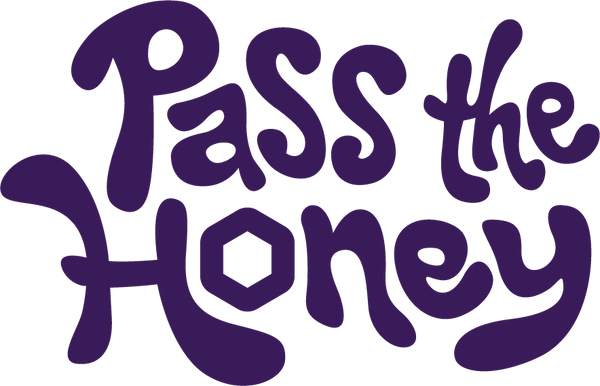Pollination is an amazing and integral part of the entire biosphere, even though most people tend to associate pollen with allergies, sniffling, and sneezing. Pollen only becomes an adversary when there’s a surplus that, combined with air flow, ends up overwhelming those with pollen allergies. The rest of its existence consists of helping plants to bear fruit, flowers, nuts, and even ensuring the next generations of their species.
The (Literal) Birds and Bees
Pollen contains a plant’s DNA and genetic material; while some plants are able to self-pollinate, others require the company of other nearby flowering plants of the same species to do so. When a plant of either type requires animal pollinators or insect pollinators to help move pollen from point A to point B, it relies on biotic pollination.
The “bio” in biotic refers to wide varieties of animals and insects that forage, move through, or otherwise interact with the pollen in a plant in order to facilitate pollination services. This may occur passively as they move through an environment, where pollen “rides” on their fur, feet, or legs as they pass by, or more actively, as with bees. Flowers contain nectar, which is the main component of bee diets. As bees gather a flower’s nectar, they become coated in pollen, effectively transferring it as they move onto the next bloom while feeding.
Mother Nature Lends a Hand
On the other side of the pollination coin area biotic methods.Of the different types of pollinators, this type of pollination is unique because unlike pollination by insects or hand pollination, it involves the transfer of pollen without the aid of anything living to help it along. These plant types rely on air, and to a lesser extent, water, in order to spread their DNA and propagate their species. When wind currents blow or water currents flow, they dislodge the pollen from the “parent” plant and spread it where it needs to go. Sometimes that means within the same plant, sometimes a great distance away in order to ensure biodiversity.
This type of pollination is easy to see, particularly on a windy day when the pollen count is high. In some warmer southern states, wind pollination can even be observed on cars and windows as a fine yellow dust. Considering the fine layer that manages to remain after the wind dies down, it’s a little staggering to imagine just how much pollen moves in this fashion. Consider that for every visible bit of residue left behind, there are exponentially more pollen grains moving on to their destination.
The law of averages is also heavily in play, particularly in abiotic-pollination species: far more pollen than is necessary is produced in order to ensure enough “makes it” to the intended destination. If you’ve ever wondered why some days are very bad for those with allergies, this abundant process is likely the culprit. When pollen counts are high, temperate seasonal growing conditions (think warm and humid, like summer) mean plants are working overtime to take advantage, resulting in lots of pollen production. That’s why a third abiotic method – gravity – also works very well to move pollen.
Enticing and Fragrant
Like any aspect of nature that depends on another, a certain quid-pro-quo is necessary to ensure consistency in pollen distribution. Plants and flowers have specifically evolved to entice the most efficient pollinators in biotic species. In fact, everything from the shape and color of the flower to its typical blooming season is perfectly timed to coordinate with their ideal pollinators: bees, birds, and even bats. Filled with far-reaching fragrances and sweet, energy-packed nectar, flowers and fruits draw the eye and coax pollinators to their aid, from gardens to wild meadows coast to coast.
If you’ve ever leaned down to smell a beautiful flower, there’s a good chance that you acted as a pollinator yourself! The pollen may have transferred from the flower to your hair or eyebrows, or jostling the flower might have loosened pollen to spread in the wind. Chances are you never even considered that you were performing an ecological duty; that’s how well flowers have adapted to soliciting breeding help in the wild.
Pollen: Friend, Not Foe
While allergies can make pollen feel like it’s out to make you miserable, it’s worth the momentary discomfort: remember, most of our food supply relies on it! Even setting aside the directly-pollinated crops like fruit, livestock relies on feed made from other pollinated plants as well. Forests that are harvested or burn down rely on pollination to help regrow trees and shrubs. Sandbanks fighting erosion, ecosystems relying on specific feeder plans, bee colonies pollinating even more plants: you guessed it – all of these count on pollen to stay healthy and strong. So the next time you need to clean fine yellow particles off of your car’s windshield, or take an allergy pill for a runny nose, remember: it may not be convenient or tidy, but pollen is important - it’s the reason humans are still surviving as a species.
Sources Cited:
- “What is Pollination?”U.S. Forest Service (www.fs.fed.us), (no publish date),https://www.fs.fed.us/wildflowers/pollinators/What_is_Pollination/. Accessed May 30, 2019.
- “What Is Pollination in Plants? – Definition & Types.”Study.com, (no publish date),
- https://study.com/academy/lesson/what-is-pollination-in-plants-definition-types-quiz.html.Accessed May 30, 2019.
- “Plant Pollination Strategies.”U.S. Forest Service (www.fs.fed.us), (no publish date),
- https://www.fs.fed.us/wildflowers/pollinators/Plant_Strategies/index.shtml. Accessed May 30, 2019.
- “Insects & Pollinators.” USDA Natural Resources Conservation Service (www.nrcs.usda.gov), (no publish date),http://www.nrcs.usda.gov/pollinators. Accessed May 30, 2019.
